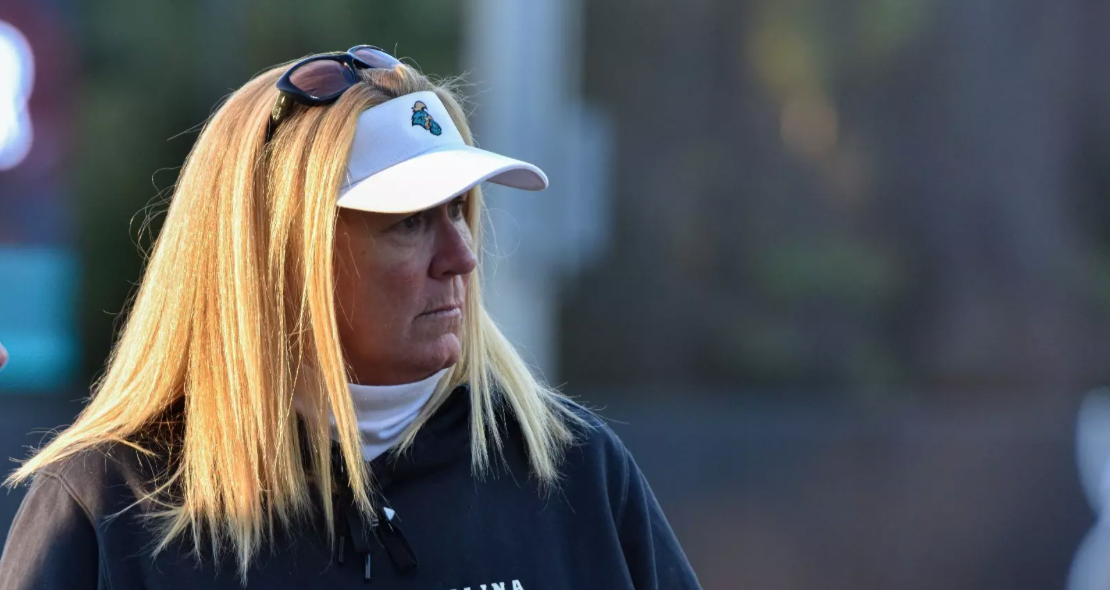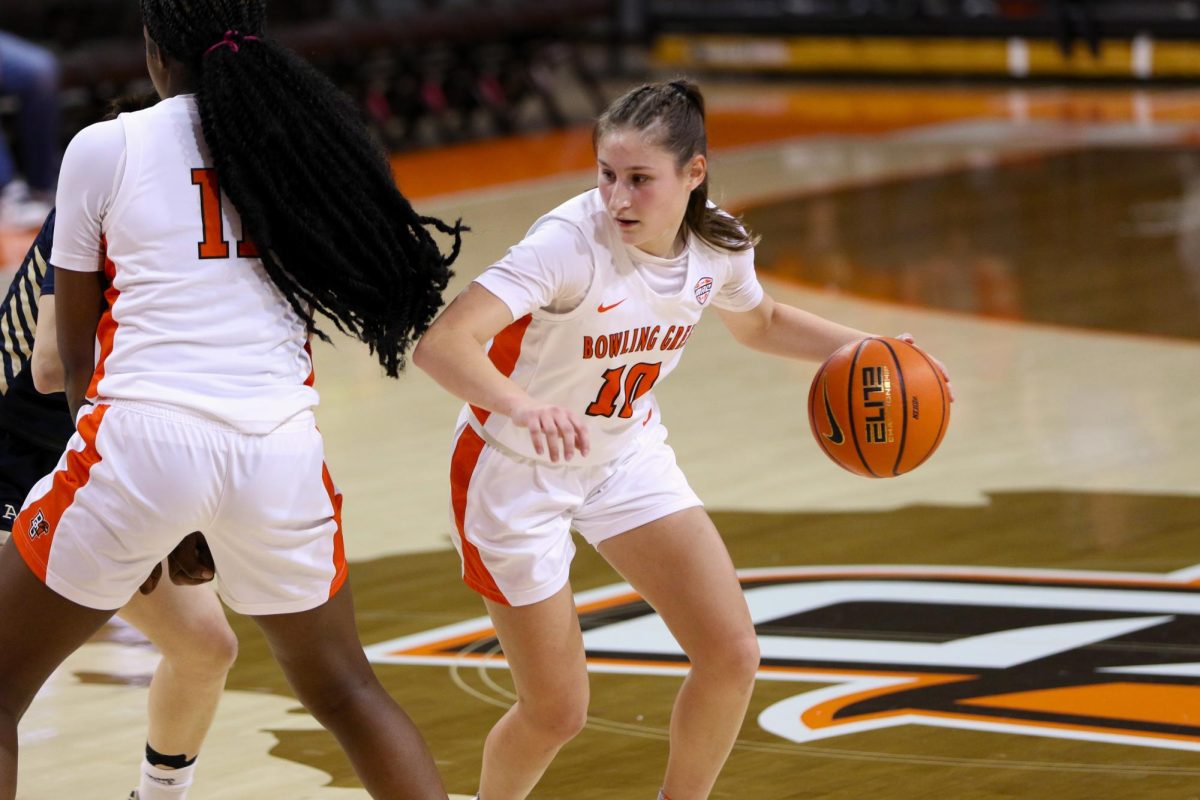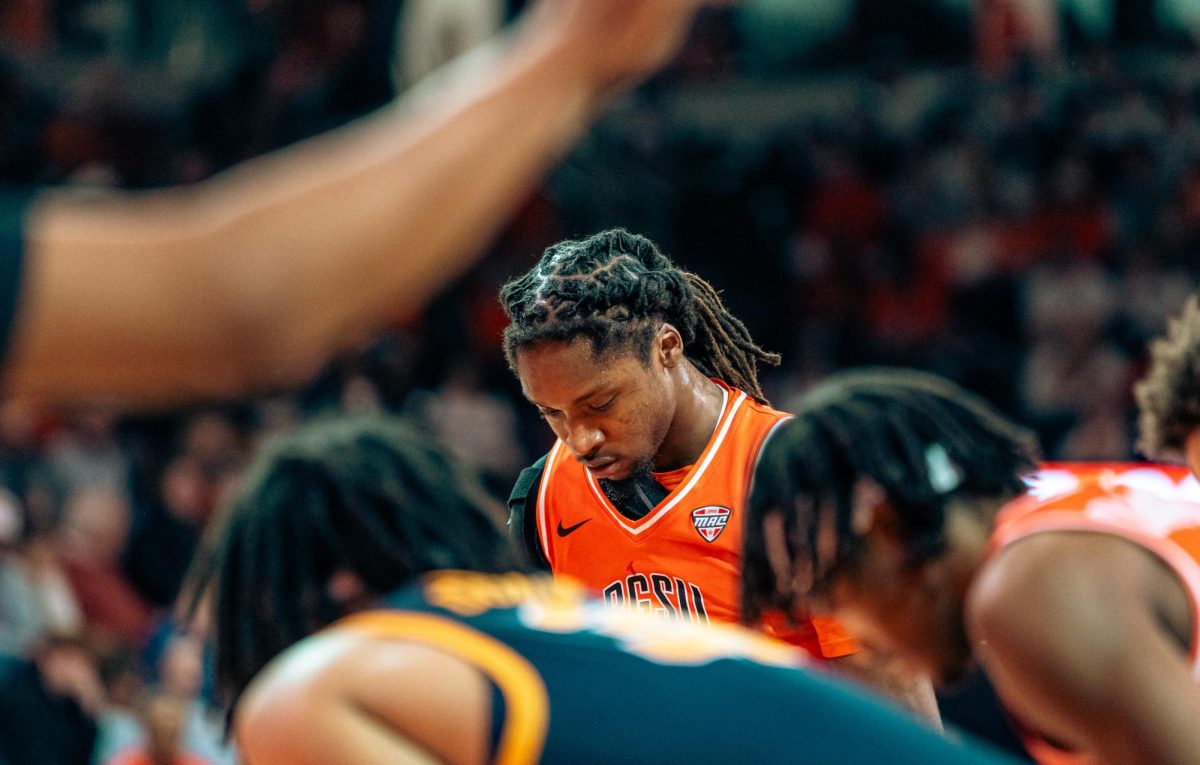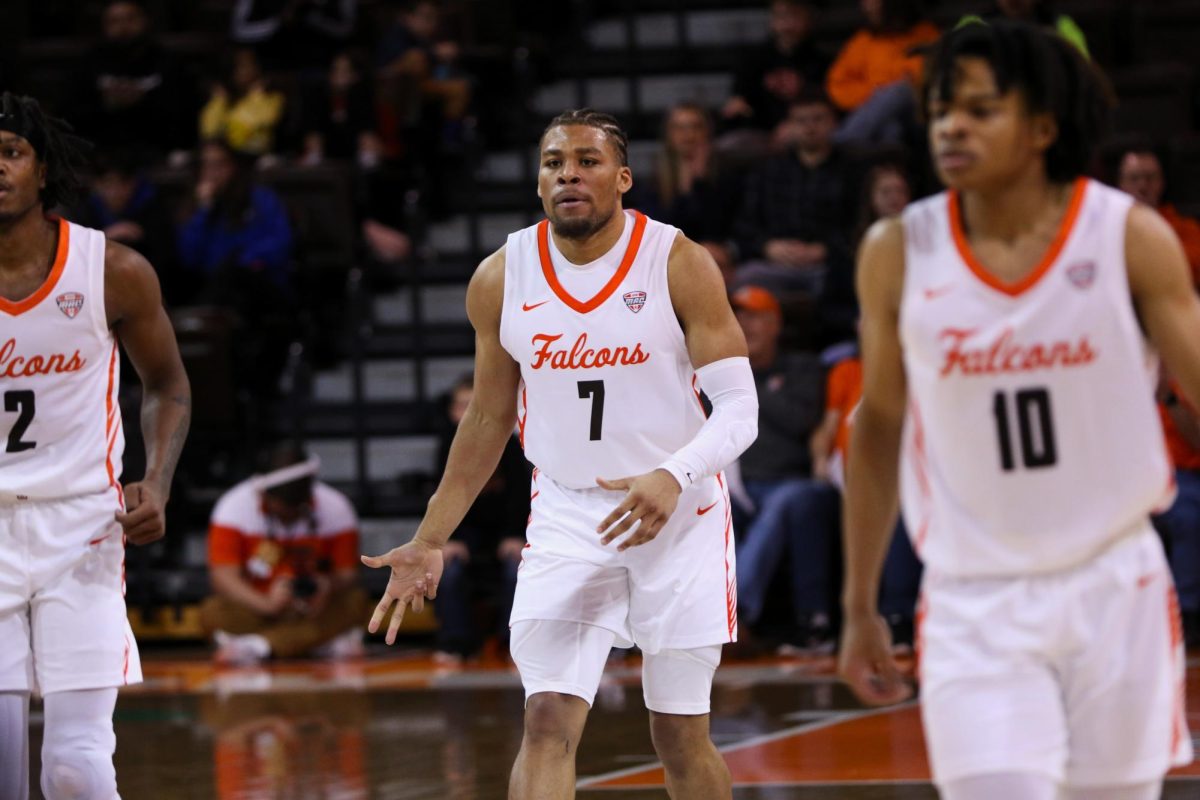University alumnus Crystal “Boo” Ellis’ life is marked by several achievements:
•Receiving an honorary degree at both the University and the University of Toledo, in addition to obtaining an undergraduate degree at the University in 1957.
•Teaching swimming to thousands of children — including Toledo Mayor Mike Bell — at the YMCA in Toledo in the late 1950s and 1960s.
•Serving as a coach, principal and superintendent of Toledo Public Schools.
•Being named as one of the 100 most prominent alumni in the University’s 100-year history.
But his most historic achievement was accomplished before he even graduated.
In 1951, Ellis became the first black basketball player at the University. He joined the Falcons after leading Springfield High School in Springfield, Ohio, to the 1950 state championship.
But Ellis did more than dominate the backboards: He helped ease the transition for future black players at the University, including NBA Hall-of-Famer Nate Thurmond, 12-year NBA veteran Antonio Daniels and center Otis Polk.
As part of the year-long University Centennial Celebration, Ellis will be one of several panelists to share his University experiences during the 100 Years of Sport at BGSU today at 6 p.m. in Olscamp 111.
In an exclusive interview with The BG News, the BGSU Hall of Famer talked about his University experiences.
Q: When did you first become interested in attending the University?
CE: Harold Anderson and his great teams at Bowling Green were well known in Ohio. Harold Anderson is a legend.
Don’t let anyone tell you dreams don’t come true.
When I was in the 8th or 9th grade, when I was still in what you called the junior high, I read in the paper where Charlie Share makes All-American at Bowling Green State University.
I was just at that age where you dream of what you want to do. I said to myself, and I’ll never forget this: ‘One day I’m going to Bowling Green State University and play basketball.’
Q: How did the University recruit you?
CE: Little did I know after we won the [1950 Ohio] State Championship that Harold Anderson was at the state tournament and recruiting for Bowling Green.
[Anderson] started checking on my background. Bowling Green never had a black basketball player. This was something breaking the mold at Bowling Green. The only thing Charlie Fox [Springfield High School principal, went to school in Akron with Anderson] said that was negative, you know, Boo has a temper, and I do have a temper, but it’s not one that vicious or harmful. It’s is one that is more determined against someone else.
Q: How did you receive the nickname “Boo”?
CE: My mother said it was the first word that I said. Now I got another idea as to how I got the nickname Boo.
My father’s name was Booker and I think they called me that because he was killed when I was 2 months old. I think that may have been because “Boo” is just the first part of Booker.
Q: What were some of your best memories playing for University?
CE: The night we beat Western Kentucky here at Bowling Green [in 1952]. They brought a team here that had the [best] basketball players I think I had ever seen collectively on a team. We saw Western Kentucky warming up just straight dunking the ball. Boom!
Harold Anderson said we got to take high-percentage shots. He said you can’t shoot until you see the white of their eyes. In other words, you got to make sure that when you shoot it, you make it, otherwise you are not going to win this game.
We beat them and Ed Diddle [Western Kentucky University’s hall-of-fame coach who famously waved a red towel during games] stopped waving the towel. We weren’t missing and we were stopping them to a point of where they weren’t dunking because we were positioning. We played smart basketball. And Western Kentucky was a powerful team. That was the biggest victory that we had here.
Q: What did it mean to you to become the University’s first black basketball player?
CE: Nothing. I was a member of the team.What I wanted to do is be the kind of person to be grateful for the opportunity that I had been given by Harold Anderson. That is what it meant to me because that wasn’t happening.
In Toledo, they had a few [black] basketball players, but that was a big city. In the smaller universities, [putting black players on teams] wasn’t happening. It wasn’t happening in Dayton or Ohio U. It just wasn’t happening.
And I wanted to make sure that what I did and how I did it and how I represented Bowling Green State University was appropriate.
Q: How significant of a figure was Harold Anderson to your life?
CE: Harold Anderson was just a wonderful mentor. I came to Bowling Green to basically play basketball. Harold Anderson brought me to Bowling Green to get an education and then play basketball.
And he told me that when I was getting passing grades just enough to get by my freshman and sophomore years, he told me, “I didn’t bring you here just to play basketball. I brought you here to get an education first and then basketball.” That is the man he was.
That was Harold Anderson’s way of life. I think he had a deep love for individuals. I didn’t think he was a basketball mind as much as my high school coach. We ran more options in high school [compared to] Harold Anderson. His game plan was we’ll outrun them. They can’t keep up with us. We outscore them. We won’t have to play defense. That is our way of winning and he won.
Q: How proud are you to represent the University as one of the 100 greatest athletes in the University’s history?
CE: When you talk about what you’ve been given, you got to feel proud to be able to give back. When I step on this campus, I don’t feel that my feet are touching the ground. I’m lifted up above the ground.





